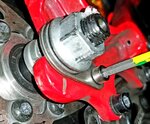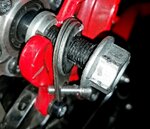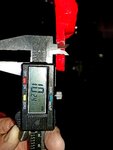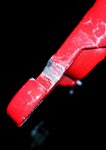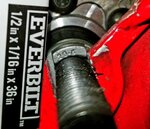Yep, Asher. Impractical to fit to a CCS, generally speaking.
But I am going to make it work on this bike,
Front tire is a Schwalbe G-One Speed SnakeSkin 29" x 2.0 mounted a couple of weeks ago. I will be changing it out soon for the larger tire size, topic of this thread.
Rear tire is the thread topic, Schwalbe Big One (obsolete 2016 name for today's identical G-One Speed 29" x 2.35" LiteSkin beach racing tire), perhaps the very lowest rolling resistance bicycle tire in production on asphalt today.
Also, please look at the volume difference between the nominal 2" and 2.35" sizes in the video above?
Eyeballing it, to me the rear seems like more than 50% more volume than the front tire.
It is like a fat tire bike now but on Reasonableness Steroids. Juiced cannot slightly modifiy the CCS to take this sized tire without burring the present product line distinction. Nonetheless, all CCS bikes would look better and run better with a Schwalbe SnakeSkin G-One 29" x 2.35" if the frames were only made to take this size of tire.
The bike
was easy to pedal before with its pair of 2" wide G-Ones. Now, however, is astonishingly
easier yet to pedal.
Even with the higher overall gear ratio caused by the larger circumference of the Big One, the CCS subjectively feels like each gear is two gears lower than before, so to speak.
I am sold on the rear tire and will make it work with more clearance because I like the reduced pedaling effort and the very silky suspension.
To finish crushing in the ID of the chainstays I need something stronger and more powerful than a Husky C clamp. The one I got today at Home Depot (lifetime replacement warranty on all Husky handtools, no matter what) has a malleable iron frame and this soft iron frame bent sideways on me--although it lasted long enough to get the basic clearance needed.
However, I need about 3mm more each side for practial use of this setup.
This would be so easy a job, to adjust for the needed width of the 2.35" nominally wide tire, if I only had the right tool for crushing in the ID of the chainstays...
....has anybody any experience? What do the pros use?
Does this job ever get done by others, or is it a no-no?
Aluminum is ductile in one direction, pretty much OK metal for this sort of additional forming.
